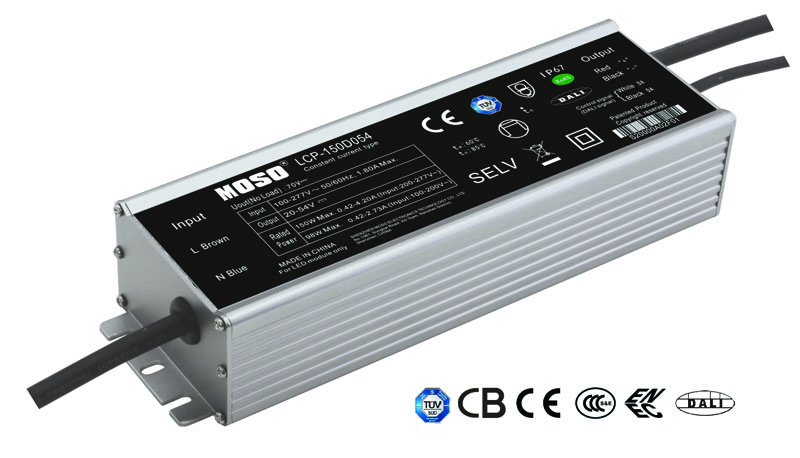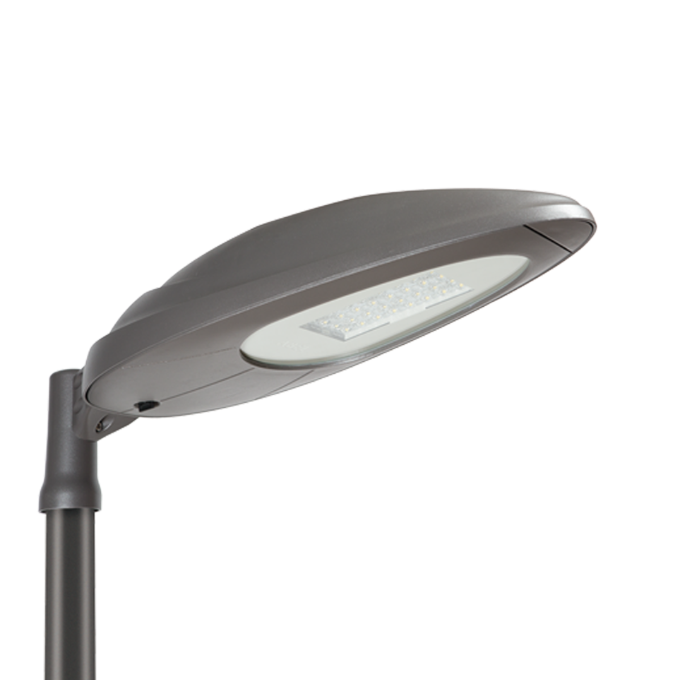Basically, in addition to the difference in appearance with the traditional light source, the light shape and performance output are also very different. Therefore, it is necessary to apply the ratio to the automotive headlights, including optical design and heat dissipation design. It will be different from the design concept of traditional car luminaires. Once the car can be successfully integrated and overcome the technical threshold, it will create a new world for car design.
Introduction to the car lighting control side graves With the different application levels, car manufacturers must choose different than the light source and packaging technology to face the different environmental requirements of the car. Generally speaking, compared with the application in the automotive industry, it is simply classified into three types of requirements, such as indicator number, projection light source and illumination source, according to the difference in brightness. The application of the number - because the range is lower than the source lumen value, the power consumption is also lower, the generated heat source has less influence on the package, so many manufacturers ignore the design when packaging The consequences of heat source loss may be caused. Therefore, most of the resin materials are coated directly than the whole, and then packaged. Because the resin material has a low heat transfer coefficient, it is easy to generate heat. In a good case, the thermal resistance coefficient of the interface between the component and the heat dissipation system is increased.
At present, it has been widely used in vehicles, including steering indicator sources, displays or related lighting in vehicles, such as car display dashboards, roof lights, taillights to the outside, front and rear indicators, reversing lights, high positions. Brake lights, etc. From a system perspective, the lighting control on the car is a subsystem in the car's main control structure, which mainly includes the door control and dashboard display system, while the basic structure is to collect the state quantity of each switch on the car, and further view Its state is to drive the light source on the vehicle and load the power required for the action.
It can be seen that the control of the vehicle body control system must be designed according to the light source of different power requirements. From another angle, from the application of the car, although it is more than the application of the high brake light, to the taillights of the car, the turn signal to the brake light, the light source has been set in the car for lighting a few years ago. Step by step to create an imaginary space than the use of lighting inside and outside the car. The ring is wrapped in a wrap-around package for automotive exterior lighting such as central parking brakes, front turn signals, rear combination turn signals, taillights and brake lights, mirror turn indicators, and instrument wrap, control backlight, central control side Interior lighting such as backlighting, navigation, and sound system.
Different components of the vehicle's lighting protection technology have different application methods and environmental scopes, so the packaging methods are also different. If the chip and packaging technology can be further improved, the brightness of the product can be doubled.
When the interior lighting source application is used, in addition to the above-mentioned in-vehicle indicator light source, it can also be used for interior lighting, fog lights and front and rear direction indicators with high brightness requirements. As the brightness demand increases, the package power must also increase relatively. However, as a result, it is easy to affect the color attenuation problem due to the increase in power, so the heat dissipation problem has to be taken into consideration.
In the package design, in addition to resin-based material packaging, it is also possible to design a metal block that can be derived from the generated heat source at a first time in order to maintain luminous efficiency and thermal resistance problems. Automotive projection light source application - This is currently the most demanding package brightness than in automotive applications. Previous lighting systems were mainly used, including fog lamps, low beam lamps, and high beam lamps. The package of a single body must meet the above. The thermal resistance must be less than that of Nassau, in order to maintain the heat dissipation capacity of the main body under the high temperature environment, and keep the output efficiency of the light source within the specified range.
Luminous lighting requirements for vehicles Basically, in terms of the demand for flow brightness, the lighting equipment used in automobiles usually requires lumens of brightness. Most of them use surface-mounting and packaging methods. The single package is about lumen output. Its luminous efficiency can reach between the Shanghai Blades. Secondly, the high-position brake light for vehicles requires about a lumen of brightness. Generally, the diameter of the shell-type pressure-packing technology is used to enhance the design of the illumination angle and intensity, and then the resin lens is mounted on the light-emitting element to achieve the adjustment of the light. The brightness of the single package is about lumens, and the luminous efficiency is up to one. As for the requirements of the taillights of the car, about the first-class brightness, the general packaging technology, the brightness of the single package is about first-class, and the efficiency can be protected.
Due to the lack of brightness of the light, before the past, most of them were used as in-vehicle indicator lights or instrument lighting applications. In recent years, they have been used in high-position brake lights, tail lights, and direction-assist lights.
The above is the light source measurement data installed on the car as the car body. At present, the factory and the car factory are actively cooperating, trying to compare the brightness of the headlights with the headlights and fog lamps of the front camera system. The white light of the side fork lumens is higher than the current high-wattage package structure. The output of each single package can be first-class and the efficiency is expected to increase to one. The light sources currently used in vehicles are classified into incandescent bulbs, halogen bulbs, gas discharge bulbs and specific light sources.
Automotive headlamp design specifications Before starting to design headlamps, we should first consider the relevant regulations, including optical brightness, environmental testing, brightness attenuation, etc., further consider the relevant optical design, mechanism design, heat-resistant design and For details such as electronic control design, for optical design considerations, in addition to the reflector design, it is necessary to consider the light-emitting type rather than the light-emitting type. Different package types will produce different light-type outputs, which will further affect the reflector or The requirements for imaging lenses are similar to those of traditional headlamp designs.
In the traditional headlamp design, the photon release of the bulb itself comes from heating the tungsten filament, which does not affect the brightness output due to the heat generated by itself or the high temperature from the engine room. The heat dissipation focuses on the uniform temperature of the entire headlamp cavity. Design instead of heat dissipation of the bulb, but in the choice of headlamp material, it is necessary to consider whether it can withstand the high temperature from the bulb. For example, the temperature of the headlight cavity of the car can withstand the temperature of °C, and the temperature inside the fog lamp can be as high as °C. Therefore, the materials selected here are generally based on heat-resistant materials. However, for example, the photon release comes from the energy level jump of the interface, which is negatively correlated with temperature. The higher the temperature, the weaker the light source output, so heat dissipation becomes an important issue as a light source design.
Optical design optical design first considers the regulatory requirements, discusses the relationship between the angle of view and the intensity, taking the near lamp as an example, it must be designed for its special degree elevation angle.
In the traditional luminaire design, the angle and intensity control using the reflector and the lens engraving were changed, and the angle of the strength was directly controlled by the reflector. The fisheye lens design method using the imaging method was also developed.
Regardless of the design method, we must first consider the characteristics of the light source, especially the angle and intensity of the light output. For the traditional light source, most of the column light source can produce a light output similar to the butterfly shape, and then develop Come out with optical components such as lenses, reflectors, baffles, and lenses. When using the ratio as the light source to design the luminaire, it is necessary to rethink the optical characteristics from the traditional cylindrical light source to the planar light source, and then with the external optical components to produce different combinations for different products, according to the design of the German lamp factory. The light source can be divided into eight categories.
At present, the amount of luminescence per unit area is not as good as that of a halogen bulb and a discharge bulb. To obtain the same lumen output, a larger package area is required.
As the output area of ​​the light source increases, the difficulty of optical design increases. Therefore, in the existing concept car, the modular single optical lamp design is replaced by a modular optical design, and multiple sets of light sources are used to achieve the traditional lighting. The level of illumination, in addition to reducing the difficulty of optical design, also increases the sense of design of the car body.
MOSO Class II Programmable LED Driver supports 0-10V, PWM, timer step dimming or DALI control from 75W to 320W. It can reprogram the output by a software or infrared controller. Class II outdoor Driver is IP67 waterproof, with build-in surge protection. It provides a Dim-to-off mode with low standby power. MOSO Class II Programmable power uses extruded-metal housing and fully glue-potted for good dissipation.


MOSO developed Class II Programmable LED Driver series with special isolation design for global market especially for the Europe. All Class II LED Drivers are certified with CCC, CE, TUV, ENEC and CB standards.
MOSO has set several distributors in Europe, United States, Latin America, Asia and Australia. All MOSO Class II Programmable power suppliers provide 5 years global warranty. In case of any failure, customers can get replacement either from MOSO directly or any one of MOSO distributors.
MOSO always dedicates to providing professional outdoor lighting solutions. Please feel free to contact our sales team if you need any support!
Class II Programmable LED Driver
Class II Programmable LED Driver,Class II Programmable Dimmable Driver,Dim-to-off Class II Programmable Driver,Class II Programmable Outdoor LED Driver
Moso Electronics , https://www.mosoleddriver.com